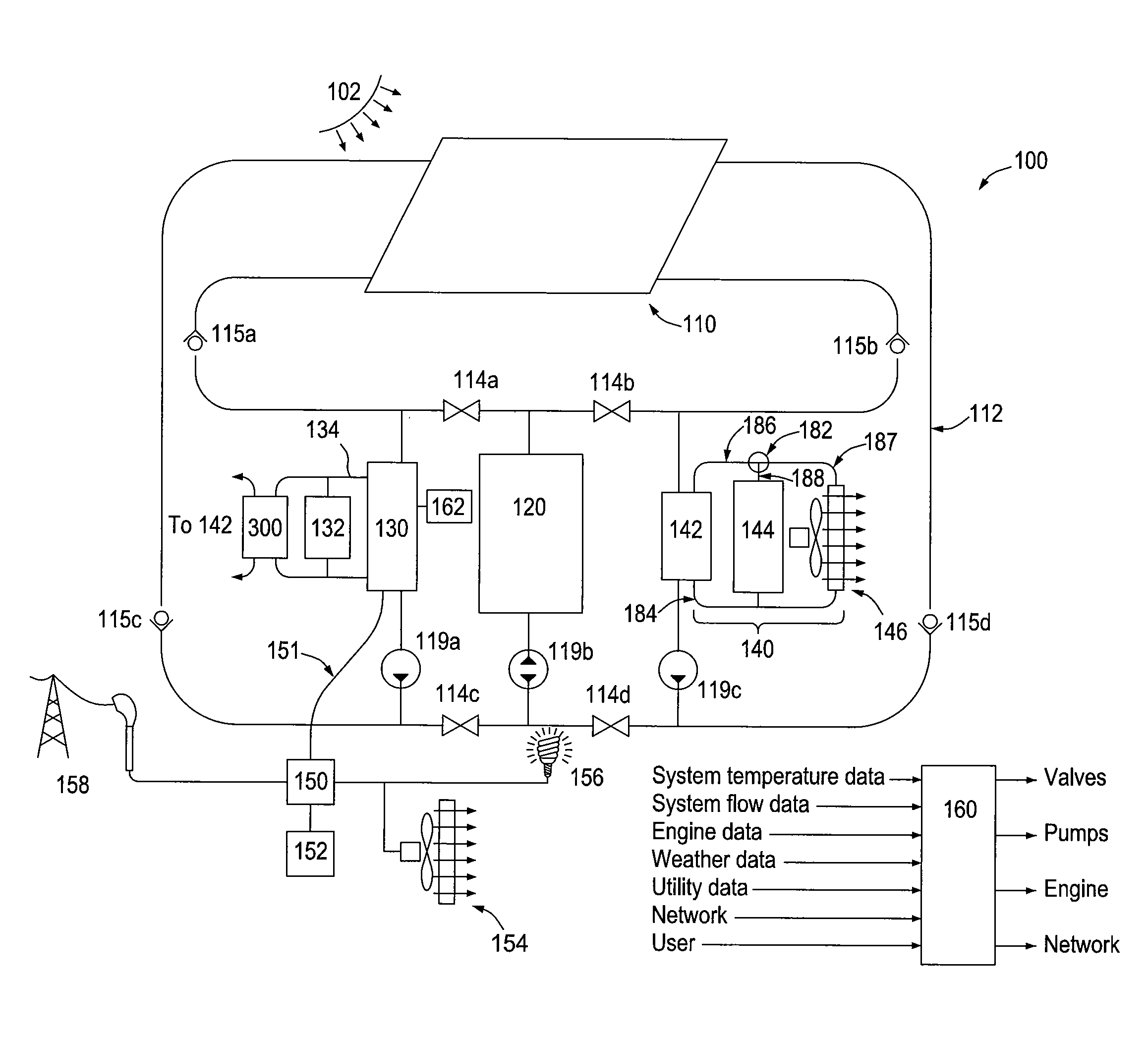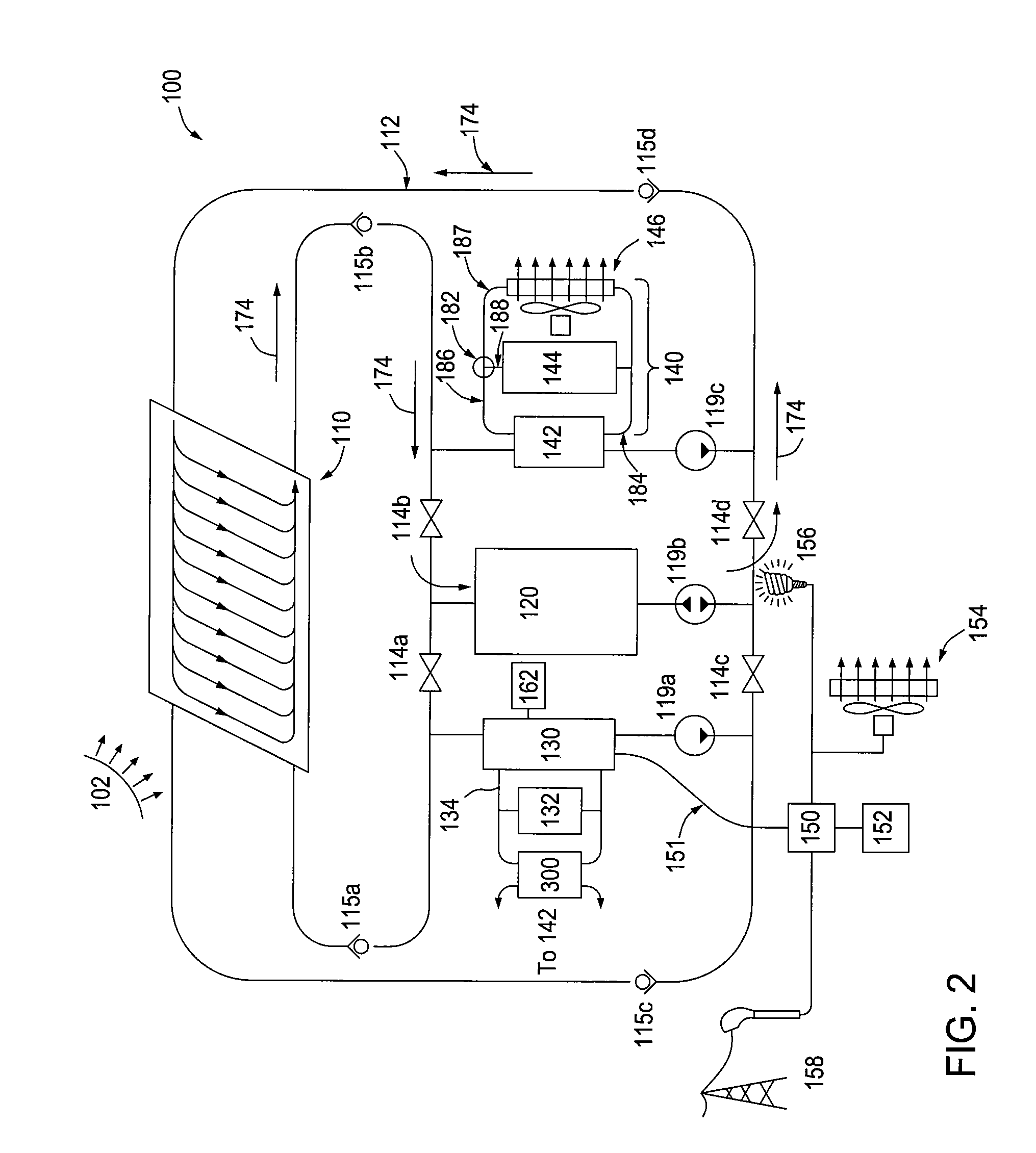Control of power generation system having thermal energy and thermodynamic engine components
a technology of power generation system and control system, which is applied in the direction of mechanical power/torque control, ratio control, heat storage plant, etc., can solve the problems of inability to reconcile the disparity, ineffective photovoltaic solutions, and inability to meet the electrical and thermal energy needs of residential or commercial buildings. to achieve the effect of maximizing electric energy production or the rate of return on investment, minimizing the cost or amount of purchased electric, and maximizing the cost or efficiency of electric energy
- Summary
- Abstract
- Description
- Claims
- Application Information
AI Technical Summary
Benefits of technology
Problems solved by technology
Method used
Image
Examples
Embodiment Construction
[0036]Aspects of the present invention involve a power generation system that integrates forms of alternative energy such as solar energy, geothermal energy, industrial or commercial waste heat; traditional or uninterruptible energy sources such as propane or fuel oil stored on site or as provided by connection to an electric power grid or a natural gas service; on-site energy stores; space heating and cooling demands; domestic hot water heating demands; thermodynamic engines that may generate electricity; and heat pumps. The integration involves the control of the system to account for factors external to the system, which may include past, historical, present, or forecast conditions of time of day, day of week, calendar day, weather, solar irradiance, and availability and price of energy for both sale to as well as purchase from a utility or other energy supplier, as well as factors internal to the system, which may include past, historical, present, or forecast conditions of temp...
PUM
 Login to View More
Login to View More Abstract
Description
Claims
Application Information
 Login to View More
Login to View More - R&D
- Intellectual Property
- Life Sciences
- Materials
- Tech Scout
- Unparalleled Data Quality
- Higher Quality Content
- 60% Fewer Hallucinations
Browse by: Latest US Patents, China's latest patents, Technical Efficacy Thesaurus, Application Domain, Technology Topic, Popular Technical Reports.
© 2025 PatSnap. All rights reserved.Legal|Privacy policy|Modern Slavery Act Transparency Statement|Sitemap|About US| Contact US: help@patsnap.com



